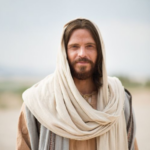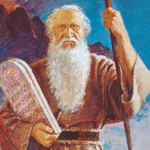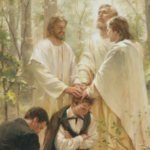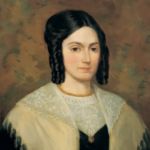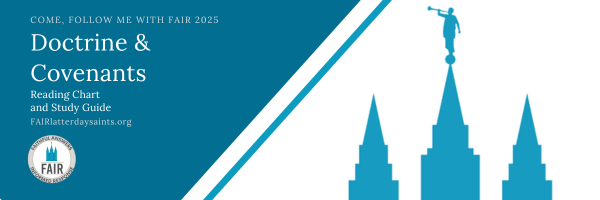
This guide is not meant to replace the Come, Follow Me curriculum by the Church of Jesus Christ of Latter-day Saints. This is merely a study tool and a helpful guide to aid in your study as you follow along the church’s curriculum. If there are any questions feel free to reach out to us.
We cover some frequently asked questions, include some criticisms that occur often, as well as the answers to them with some helpful resources from our website and of course, the Church’s website. While we cannot address every question and criticism and cannot provide every resource, we hope what we have included in this guide will be helpful to you.
January
Week 1
December 30-January 5
The Restoration of the Fulness of the Gospel of Jesus Christ
“The Promised Restoration Goes Forward”

Today’s Assignment
The Restoration of the Fulness of the Gospel of Jesus Christ; paragraph 1-2
Today’s Assignment
The Restoration of the Fulness of the Gospel of Jesus Christ; paragraph 3
Today’s Assignment
The Restoration of the Fulness of the Gospel of Jesus Christ; paragraph 4
Today’s Assignment
The Restoration of the Fulness of the Gospel of Jesus Christ; paragraph 5
Today’s Assignment
The Restoration of the Fulness of the Gospel of Jesus Christ; paragraph 6
Today’s Assignment
The Restoration of the Fulness of the Gospel of Jesus Christ; paragraph 7-8
Weekly Questions
The Great Apostasy refers to the period after Christ’s apostles were killed, when priesthood authority and key doctrines were lost. These factors suggest a loss of divine guidance and the need for a restoration.
The concept of the Great Apostasy refers to the period after the death of Christ’s apostles when priesthood authority and essential doctrines were lost. This resulted in a widespread loss of divine guidance, which led to significant changes in both the doctrine and structure of the early Church. According to Latter-day Saint teachings, the Apostasy was prophesied by both Old and New Testament figures, including Jesus Christ, who warned of such a falling away (see Acts 20:29–30; 2 Thessalonians 2:1–4).
The evidence of the Great Apostasy can be seen in the lack of continued revelation and priesthood authority, as well as in the proliferation of differing doctrines and practices that did not align with the original teachings of Christ and His apostles. For instance, many of the ordinances of salvation, such as baptism and the conferral of the Holy Ghost, were either lost or altered. Without the priesthood authority, changes were made to the structure of the Church, and many doctrines were corrupted. Latter-day revelation, including the writings of Joseph Smith, affirms the reality of the apostasy and the subsequent need for a restoration.
The concept of the Great Apostasy is a central teaching in Latter-day Saint theology, signifying the period after the death of Christ’s apostles when the original Church and priesthood authority were lost. This loss, according to Latter-day Saints, necessitated a restoration, which is believed to have occurred through Joseph Smith. There is evidence for the Great Apostasy both in scripture and early Christian writings.
Many people have lived and died without knowledge of the gospel of Jesus Christ. The Plan of Salvation allows for those who had not heard of the gospel to be taught after this life in what is known as the Spirit World. Not to mention the Church sends out missionaries all over the world to help spread the gospel to those who haven’t had the chance to accept it yet.
While Joseph Smith’s First Vision answered foundational questions about God’s nature and the need for a restoration, the ongoing Restoration involves confronting and resolving complex questions about history, doctrine, and practice. This reflects the dynamic and unfolding nature of the Restoration, emphasizing continuous revelation, learning, and adaptation.
The Restoration does not claim to provide immediate answers to all questions but invites a process of inquiry and faith. For example, revelations often address immediate needs or concerns, leaving room for further clarification as understanding and circumstances evolve. This process mirrors how the early Church of Christ developed amidst challenges and growing understanding over time.
From a doctrinal perspective, unanswered questions encourage humility, reliance on faith, and the pursuit of divine truth. They reflect the principle that God’s work is vast and ongoing, requiring patience and trust in His timing. This framework supports a broader understanding of the Restoration as a process that integrates human learning, divine guidance, and the unfolding of God’s purposes in a world of complexity.
The Lord always works in continual progression not complete understanding. One example of this is the Word of Wisdom. Although the restoration technically started in 1820, the Word of Wisdom was not revealed to Joseph Smith until 1833. The Lord always has worked “… precept upon precept… line upon line… here a little, and there a little…”
The Restoration of the gospel, initiated by Joseph Smith’s First Vision, demonstrates a divine pattern: answers are given as part of an ongoing process rather than a single event. While the Restoration began with a profound answer to Joseph Smith’s question, the unfolding of further revelations teaches that the gospel is restored “line upon line, precept upon precept” (Isaiah 28:10; Doctrine and Covenants 98:12). This pattern mirrors our personal growth as disciples, emphasizing faith, patience, and continued learning.
Unanswered questions about Church history, doctrine, or practices are not signs of failure but rather invitations to seek further understanding.
This question is a crucial aspect of the Protestant Reformation and Restoration efforts, and many have debated it for centuries. Here are some points that may provide insight:
Both the Protestant Reformation and the Restoration movement in the 19th century claimed to be restoring the original Church of Christ. However, these efforts did not necessarily recover the original Church with all its doctrine, structure, and practices. For instance, the early Christian Church underwent many changes during the Great Persecution under Diocletian in the early 4th century and later evolved into various sects and denominations.
Week 2
January 6-12
Doctrine and Covenants 1
“Hearken, O Ye People”

Weekly Questions
It can be challenging to trust prophets knowing they aren’t perfect, but understanding their role helps. In short, prophets are trustworthy because they are called by God. Their imperfections do not invalidate their divine role. The question of trusting prophets despite their human imperfections is an important one. Latter-day Saints understand that prophets, like all humans, are fallible. They are not considered infallible in their personal opinions or when acting outside of their prophetic calling. However, when prophets speak under the authority of their divine calling, their teachings are trusted as inspired by God. This distinction helps members understand that while leaders may make mistakes or express personal views that are not doctrine, their role as prophets ensures that the guidance they provide for the Church is spiritually sound and ultimately reflects God’s will.
As the First Presidency has taught, only the Lord is infallible, and while leaders may err in their personal opinions, their divine role remains reliable when they speak under inspiration. The Church affirms that the doctrine it teaches is carefully considered and not simply based on the personal views of its leaders. Thus, while mistakes may occur, they do not invalidate the essential role of prophets as messengers of God’s guidance.
The role of prophets in The Church of Jesus Christ of Latter-day Saints, including how to trust them despite their human imperfections, can be a topic of concern for some. However, understanding the nature of prophets helps clarify this issue. Prophets are called by God to guide His people, and their imperfections do not negate their divine role. In fact, the scriptures and teachings of the Church emphasize that while prophets are mortal and make mistakes, they are still chosen vessels through whom God reveals His will for His children.
The Church explains that even though prophets are not infallible, their teachings and guidance are critical for the spiritual welfare of the Church. Trusting in their role as prophets means having faith that God works through imperfect people to accomplish His purposes. The importance of following prophetic counsel, despite human flaws, is underscored by the fact that God’s plan is carried forward through these leaders, and He provides them with the necessary revelation to direct His Church.
The Lord’s call to prophets is rooted in His eternal purposes, and their teachings, when followed with faith, bring blessings and spiritual guidance to those who listen. Trusting prophets involves understanding that while they may err, God’s work continues through them, just as He used imperfect individuals throughout history to fulfill His purposes.
For further insights on trusting prophets, you can refer to the Church’s resources on this topic. Some key articles include “The Role of Prophets” and “Trust in the Prophet”. These offer deeper perspectives on the divine nature of prophetic guidance and how to trust the Lord’s servants.
Source(s):
If Prophets are Fallible, does this make spiritual epistemology unreliable?
This event’s impact on Latter-day Saint doctrine is far-reaching. It is a foundational event that directly informs our beliefs about the nature of God, the importance of the Restoration, and the role of modern prophets. It also shapes our understanding of divine communication, as it underscores the importance of personal revelation.
Joseph Smith’s First Vision holds deep significance for Latter-day Saint doctrine, as it directly impacts core beliefs regarding the nature of God, authority, and personal revelation. The event, which occurred in 1820, was pivotal in initiating the Restoration of the gospel, and it laid the groundwork for several key doctrines.
First, the First Vision clarified the nature of the Godhead. Joseph saw two separate and distinct beings, God the Father and Jesus Christ, which was a crucial revelation that corrected the confusion of the time about the nature of God. This understanding of a distinct Godhead—three separate beings in one purpose—remains foundational in Latter-day Saint theology, marking a departure from the traditional Trinitarian view common at the time.
Second, the First Vision established the necessity of restored prophetic authority. Joseph was directly called by God to restore His true priesthood authority, which had been lost after the Great Apostasy. This event set the stage for the restoration of the Church of Jesus Christ through Joseph Smith, establishing the principle that modern prophets are divinely called, just as the biblical prophets were.
The First Vision also highlighted the importance of personal revelation. It affirmed that God communicates with individuals and that personal guidance and direction from Him are available to all who seek it. This principle of ongoing revelation is integral to Latter-day Saint practice and doctrine.
Additionally, the First Vision emphasized Joseph Smith’s unique role as a prophet of the Restoration. He was chosen to bring back lost doctrines and ordinances, fulfilling a divine calling that shaped the future of the Church.
In sum, Joseph Smith’s First Vision is central to the beliefs of the Latter-day Saints, offering clarity on the nature of God, the necessity of restored authority, and the role of personal revelation. The vision is a foundational event that continues to inform the theology and practices of the Church.
The question of how the word of God can be perfect when conveyed through human prophets who are fallible is a nuanced one. Prophets, like all humans, have weaknesses and limitations, which is why divine revelation is expressed through the prophet’s language and understanding. The process involves the prophet’s personal interpretation, which is influenced by their human experiences and context.
In Latter-day Saint doctrine, the perfect nature of divine revelation stands in contrast to the imperfection of human messengers. The prophet is a conduit for God’s will, but their personal experiences and weaknesses inevitably affect the way the message is delivered. However, despite these human imperfections, the message itself is not corrupted. For example, President Joseph Smith acknowledged his imperfections but emphasized that there was no error in the revelations he delivered, which were directly inspired by God.
This distinction is also important when considering the role of modern prophets. They are not infallible, but the Church’s structure and divine guidance ensure that the core doctrines of the faith remain true and untainted by the personal weaknesses of leaders. In fact, the principle that God will not allow His prophets to lead the Church astray does not imply that they are flawless in every respect, but that the Church will not fall into complete apostasy as long as the prophet holds the keys of authority.
This idea is reinforced by scripture, such as Moroni’s counsel in the Book of Mormon to recognize human imperfection while still respecting the divine work carried out through fallible messengers.
Week 3:
January 13–19
Joseph Smith—History 1:1–26
“I Saw a Pillar of Light”
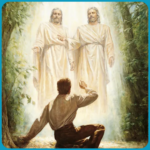
Weekly Questions
Different details were given according to the circumstances in which it was told. Looking at all the accounts together gives us a lot of information and makes it “the best documented vision in history.”
The four accounts of the First Vision may seem different, but they are not mutually exclusive. Each was written or dictated by Joseph Smith at different times, for different audiences, and with different purposes, leading him to emphasize certain aspects of his experience depending on the context.
All four accounts agree on the core elements: Joseph prayed for guidance, and through a miraculous vision, he encountered divine beings who revealed important truths. The variations add depth and richness to our understanding, but they do not conflict with one another.
Joseph Smith’s First Vision has significant impact on the Church’s doctrine. Overall, the First Vision is central to the Church’s doctrine, restoring key truths about God, authority, and revelation.
Week 4
January 20-26
Doctrine and Covenants 2; Joseph Smith—History 1:27–65
“The Hearts of the Children Shall Turn to Their Fathers”

Weekly Questions
While it would have been challenging, Joseph’s strength and experience with physical labor made it a realistic task.
The repetition served to emphasize the message’s importance and prepare Joseph spiritually for his role. Each visit built upon the last, with additional insights provided to help Joseph fully understand his mission. This pattern mirrors scriptural principles where important doctrines are reiterated for emphasis and deeper comprehension.
Joseph’s experiences demonstrate a process of spiritual refinement, not disqualification. Moroni required him to develop humility and self-mastery before he could handle the sacred records. This period of preparation underscores the importance of purity and dedication in fulfilling divine assignments.
When Joseph first attempted to take the plates, he was reprimanded by Moroni for having thoughts of material gain. This moment emphasized that the plates’ purpose was spiritual, not temporal. Over the next four years, Joseph visited the Hill Cumorah annually, receiving further instruction from Moroni. This period served as a time of personal growth, enabling Joseph to develop the attributes necessary to fulfill his divine calling.
February
Week 5
January 27-February 2
Doctrine and Covenants 3-5
“My Work Shall Go Forth”
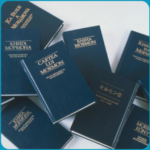
Weekly Questions
Joseph Smith was rebuked for allowing the loss of the 116 manuscript pages due to his yielding to the persuasions of Martin Harris. In other words, he listened to the desires of men rather than the desires of God. This teaches that even prophets must follow divine instructions and prioritize God’s will above human pressures. Despite his mistake, God reassured Joseph that His work would still go forward, highlighting God’s mercy and the resilience of the Restoration.
Joseph Smith’s rebuke in Doctrine and Covenants 3 highlights the principle that prophets, while chosen servants of God, are not immune to human weaknesses or mistakes. The loss of the 116 manuscript pages serves as a profound teaching moment, both for Joseph personally and for those who seek to be disciples of Jesus Christ.
The incident also reflects God’s desire to teach through experience. Joseph emerged from this trial with greater resolve to follow divine guidance strictly. His eventual success in translating the Book of Mormon and leading the Restoration demonstrates the power of repentance and God’s ability to refine His servants through challenges.
Sources and Resources:
The translation of the Book of Mormon, as described by Joseph Smith, is considered a miraculous event, central to the faith of The Church of Jesus Christ of Latter-day Saints. The tools used in this process were the Urim and Thummim and a seer stone, which facilitated Joseph’s ability to translate the ancient record.
The Urim and Thummim was a set of clear stones set in a frame, which Joseph described as “interpreters.” These were provided by God to assist seers in translating unknown languages. (See Mosiah 28:14-15.) In addition, Joseph used a seer stone, which he placed in a hat to block out external light. By blocking external light, he was able to read the English translation that appeared on the stone. Joseph would dictate the words to a scribe, who would write them. This process was described by witnesses such as Emma Smith and Oliver Cowdery.
Using devices such as the Urim and Thummim or the seer stone seems odd to many in today’s world. Such devices are, indeed, relics of a different age, but their use was instrumental in the translation process as described by numerous witnesses to that process.
While both devices were used in the translation process, the miraculous nature of this process was consistently affirmed by Joseph and others involved. They emphasized that it was not the devices themselves, but the divine power through which they were used, that enabled the translation.
Sources and Resources:
Statements on the Book of Mormon Translation method: 1846-1900
In Doctrine and Covenants 5, the Lord informs Joseph Smith that in addition to the witness of the Book of Mormon that Joseph bears, the Lord will select three witnesses who will bear testimony. They will “know of a surety that these things are true, for from heaven will I declare it unto them” (v. 12).
The Lord recognizes Martin Harris’s desire for a witness of the truth of the Book of Mormon, and the Lord promises him that if he humbles himself, repents, and sincerely prays, then he will be one of these three witnesses. Furthermore, his role was not only about witnessing physical artifacts but also about spiritually testifying to the truth of the Book of Mormon and Joseph Smith’s divine calling. The Lord’s choice of Martin as a witness reflects God’s capacity to see potential in individuals despite their imperfections.
Harris’s testimony is notable because, despite various trials—including his eventual estrangement from Joseph Smith and temporary departure from the Church—he never denied his experience with the plates. His unwavering witness, alongside the testimonies of Oliver Cowdery and David Whitmer, lends credibility to the authenticity of the Book of Mormon.
Sources and Resources:
Statement of the Three Witnesses
Lesson 15: Doctrine and Covenants 3-5
Weekly Questions
Distinguishing between personal revelation and your own thoughts or feelings can be challenging, and even individuals like Oliver Cowdery, who was promised the gift of translation in Doctrine and Covenants 8, struggled with this. Here are a few principles that may help you in making this distinction:
- Preparation and Effort. As seen in Doctrine and Covenants 9, revelation often requires diligent preparation. The Lord told Oliver that he needed to “study it out in [his] mind” before expecting divine confirmation. This suggests that personal revelation is not a passive process but involves thoughtful consideration, effort, and study. If you feel that you’ve carefully studied an issue and sought clarity, revelation may confirm your thoughts.
- Peace and Clarity. Personal revelation is often accompanied by feelings of peace, light, and clarity (Doctrine and Covenants 6:23). If you’re feeling confusion, anxiety, or uncertainty, it may be more likely that these are your own thoughts rather than divine guidance. Revelation tends to bring an inner calm or understanding, even if the answers are difficult.
- Consistency with God’s Teachings. Revelation from God will align with His commandments and teachings. If you’re unsure whether something is personal revelation or your own thoughts, compare it to gospel principles. Does it encourage you to follow Christ, keep the commandments, and serve others? If so, it may be revelation. If it conflicts with God’s teachings, it is likely your own thoughts or desires.
- Patience and Timing. Sometimes revelation comes gradually over time, rather than as an immediate answer. If you’re feeling rushed or pressured to act, it may be your own feelings pushing you rather than revelation. Give time for answers to develop and pray for guidance.
- Confirmation. After you’ve pondered a question and studied it out in your mind, as Oliver was instructed, seek confirmation through prayer. The Lord can confirm or redirect your thoughts, and this spiritual communication can help distinguish between your thoughts and revelation.
Ultimately, learning to distinguish between personal revelation and your own thoughts is a process that improves with experience and spiritual sensitivity, as was the case with Oliver Cowdery. Be patient with yourself as you learn to receive and understand revelation.
Sources and Resources:
Question: How can you know if an answer to prayer, a personal revelation, is true?
The “burning in the bosom” in Mormonism as a method of determining truth
Those who handled the gold plates described them as being a set of thin metal leaves, about 6 to 8 inches wide and 6 to 8 inches long, bound together with rings like a book. The individual plates were described as thin, about the thickness of tin or thick paper, and the entire set was approximately 4 to 6 inches thick. Witnesses such as Martin Harris and William Smith estimated the weight of the plates to be around 40 to 60 pounds, and they were described as having the “appearance of gold,” though likely made from a gold alloy (like tumbaga) rather than pure gold and their texture was described as metallic, with the sound of rustling or clinking when moved. These accounts are consistent in describing the plates as heavier than a stone or wood, and quite solid.
As for other ancient objects with similar characteristics, many items have been uncovered that testify to the existence of each individual feature attributed to the gold plates. Metal plates used for writing, rings binding records together, and gold alloys such as tumbaga have all been documented in antiquity. What makes the gold plates unique, however, is the combination of these characteristics—a bound set of thin metal leaves, made from a gold-like alloy, with engravings and bound by rings, all together in a single record. This combination of features, while not unheard of individually, makes the gold plates distinct and unparalleled in ancient artifacts.
Sources and Resources:
Weight and size of the gold plates
Metal plates in ancient Israel
Oliver Cowdery, serving as Joseph Smith’s scribe, also desired the ability to translate. The Lord found no impropriety in Oliver asking for this ability (Doctrine and Covenants 8:11). Nor did Oliver seeking a spiritual gift mean that Joseph was somehow insufficient to the task. It is clear that both could be inspired by God in the completion of the tasks which he entrusted to them.
According to Doctrine and Covenants 9:1, Oliver was instructed by the Lord that he was not to work at translating the Book of Mormon “because you did not translate according to that which you desired of me” and Oliver had, again, started functioning as a scribe. This is not a condemnation of Oliver, but a moment for instruction (see Doctrine and Covenants 9:6-10).
Even though Oliver was no longer to translate, his experience was a critical part of his spiritual journey. As he worked with Joseph and listened to the Lord, he learned and grew. He also gained a lifelong testimony of the Book of Mormon—he would later be one of the Three Witnesses—and of Joseph’s divine calling to translate the book.
Further, the record of Oliver’s experience is instructive for all of us because it illustrates that the Lord uses us according to our desires and talents, even though we are imperfect humans. As is recorded in Doctrine and Covenants 6:4, “whosoever will thrust in his sickle and reap,” meaning, whoever will raise their hand and volunteer to help, “the same is called of God.”
Sources and Resources:
Desire and the Long Game: Doctrine and Covenants sections 6-9
In Doctrine and Covenants 8, the Lord instructs Oliver Cowdery about revelation and spiritual gifts. This was done in response to Oliver desiring the ability to translate, which was a specific spiritual gift. The Lord, in his instruction, indicates that the new spiritual gift was possible, but that Oliver also had “another gift, which is the gift of Aaron” (Doctrine and Covenants 8:6).
In the earliest versions of this revelation, the phrase “gift of Aaron” is not used. Instead, the versions use the phrase “working with the sprout” or the “rod of nature.” Most scholars agree that regardless of the wording, this is a reference to Oliver being able to work with a divining rod, a common occurrence in the early 1800s. (While not nearly as common today, it is not uncommon, especially in rural areas, for divining rods to be used.)
The Lord indicates that Oliver’s ability was a spiritual gift; “there is no other power, save the power of God, that can cause this gift of Aaron to be with you. Therefore, doubt not, for it is the gift of God” (Doctrine and Covenants 8:7-8). It is not evident from the scriptural record or any historical sources how Oliver may have used this spiritual gift. Therefore, the reference by the Lord in a revelation to Oliver seems to be a case of using Oliver’s experiences in a way that he would understand what the Lord was trying to teach him.
Sources and Resources:
Week 7
February 10-16
Doctrine and Covenants 10-11
“That You May Come Off Conqueror”

Weekly Questions
While replicating a manuscript with changes might seem difficult to achieve undetected today, in the nineteenth century, it was much easier for enemies of the Church to alter a document and potentially discredit someone without immediate exposure. If altered portions of the manuscript were published, they could have caused serious doubt about the authenticity of the translation, especially given that some individuals had desires to discredit Joseph.
The Lord’s revelation in Doctrine and Covenants 10 instructed Joseph to not retranslate the lost pages because of the risk that they had been altered. The Lord knew that those with ill intent could twist the situation to undermine the work, so He provided Joseph with an alternative plan—translating the small plates of Nephi, which covered the same time period as was covered in the lost pages. By following the commandment of the Lord in Doctrine and Covenants 10, the integrity of the Book of Mormon was protected and it ensured that critics could not sabotage the unfolding Restoration.
Sources and Resources:
The lost 116 pages of the Book of Mormon manuscript
God allowed the loss of the 116 pages to respect the principle of agency, an essential aspect of the Plan of Salvation. Agency allows individuals to make choices and experience their consequences, which is essential for spiritual growth and learning. Both Joseph Smith and Martin Harris exercised their agency when they continued to ask the Lord despite having been previously answered. Rather than preventing their bad choices, God allowed them to act and face the consequences, enabling them to learn important lessons about obedience and forgiveness.
Furthermore, God’s foresight ensured that his work would not be thwarted. Long before Joseph Smith’s time, the Lord inspired Nephi to create the small plates and directed Mormon to include them in his record. This redundant record provided a spiritual safeguard against the adversary’s attempts to undermine the Restoration. By including the small plates, the Lord demonstrated his ability to accomplish his purposes despite human errors.
Sources and Resources:
The lost 116 pages of the Book of Mormon manuscript
In Doctrine and Covenants 11, Hyrum Smith is counseled to prepare himself by studying and gaining wisdom before being sent on a mission. This has been seen as emphasizing that spiritual readiness and patience are vital before taking on sacred responsibilities. The Lord’s guidance reflects the principle that spiritual maturity is necessary for effective service.
Hyrum was eager to serve, which indicates his faith and willingness to sacrifice for the Lord’s work. However, the Lord instructed him to first focus on studying his word, gaining wisdom, and nurturing spiritual strength. In verses 15–17, the Lord emphasizes the need for Hyrum to “obtain my word” and to “seek not to declare my word, but first to obtain my word.” This illustrates the principle that preparation precedes performance. Just as Christ’s apostles spent time being taught before embarking on their ministries, Hyrum needed a foundation of spiritual knowledge and experience before he could effectively preach.
The Lord’s counsel also underscores the significance of humility and patience in discipleship. By asking Hyrum to wait, God reminded him that being spiritually prepared was just as crucial as being willing to serve. Waiting provided an opportunity for Hyrum to grow in his understanding of gospel principles, develop his testimony, and refine the spiritual maturity necessary for missionary work.
Hyrum’s example is particularly inspiring because it demonstrates that waiting on the Lord is not about inactivity but about active preparation. He later became a powerful leader and missionary, whose service greatly strengthened the early Church.
Sources and Resources:
Week 8
February 17-23
Doctrine and Covenants 12-17
“Upon You My Fellow Servants”
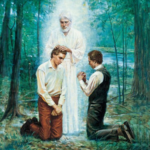
Weekly Questions
The restoration of the Aaronic Priesthood by John the Baptist is foundational to the Church. While certainty in religious events often involves faith, there is also a credible case to be made for the integrity and reliability of the historical accounts provided by Joseph Smith and Oliver Cowdery concerning the event.
- Witness Credibility. Both Joseph and Oliver were consistent and unwavering in their testimonies regarding the priesthood restoration. Despite facing intense opposition, persecution, and personal trials, neither ever denied the experience. Oliver, who temporarily parted ways with the Church, never renounced his testimony of the priesthood restoration, even after his return to the Church before his death. Their lifelong consistency in maintaining their accounts, even at personal cost, strengthens the case for their credibility.
- Corroborative Testimony. It’s also important to note that this event was not experienced by Joseph alone; Oliver was with him and bore witness to the same event. The corroboration between their accounts offers additional credibility. Two men of different temperaments and experiences shared the same extraordinary vision, providing a more solid foundation for the event’s historicity.
- Historical Context. The restoration occurred during a time when religious fervor and divine manifestations were topics of significant interest, yet no precedent existed for such a detailed claim. The precision of their account, down to the naming of John the Baptist, and the specific conferral of the Aaronic Priesthood, made it unique and bold, lending itself to scrutiny. Neither man wavered in their retelling of this event, which has been carefully recorded and passed down through Church history.
- Long-Term Effects. The significance of the Aaronic Priesthood restoration extends beyond their testimonies. The restoration set in motion the structure and authority of priesthood that continues in the Church today. The ordination of priesthood leaders, the performance of ordinances like baptism, and the overall organization of the Church all trace their authority back to this pivotal moment. The endurance and growth of the Church, which emerged from this and other restorations, further suggests that something extraordinary indeed took place.
In conclusion, while faith is always a part of religious conviction, the credibility and consistency of both Joseph Smith and Oliver Cowdery in their testimonies provide a compelling case for the reality of the Aaronic Priesthood restoration. The foundational nature of this event is supported not only by spiritual conviction but by the integrity and coherence of those who bore witness to it.
Sources and Resources:
Joseph Smith and Old Testament practices
Mormonism and priesthood/Manner in which the priesthood was restored
The Aaronic Priesthood keys restored by John the Baptist are significant because they provide the authority to administer essential ordinances such as baptism and the sacrament. These keys also give the authority to minister in outward, preparatory ordinances and oversee the temporal affairs of the Church. In the governance of the Church, the Aaronic Priesthood plays a crucial role in preparing individuals for the higher ordinances administered under the Melchizedek Priesthood. By overseeing baptisms, the sacrament, and other basic, temporal functions of the Church, the Aaronic Priesthood helps maintain the spiritual and organizational foundation of the Church, ensuring that members can receive the initial ordinances necessary for entering into further covenants with God.
Sources and Resources:
Question: What does the Bible teach about priesthood in the Church of Jesus Christ?
Priesthood authority in the Book of Mormon
Confidence in the testimonies of the Three and Eight Witnesses of the Book of Mormon stems from the fact that, despite some of them leaving the Church, none of them ever recanted their testimony of the Book of Mormon’s divine origins. The Three Witnesses—Oliver Cowdery, David Whitmer, and Martin Harris—consistently affirmed throughout their lives that they had seen the gold plates and an angel. Even during times of personal disagreement or estrangement from Joseph Smith or the Church, they held firm to their witness of the Book of Mormon.
Similarly, the Eight Witnesses, who handled the plates physically, also maintained their testimonies even when some later distanced themselves from the Church. The fact that these men upheld their testimonies, despite the personal and social consequences they faced, strengthens their credibility. Their unwavering commitment, even under duress, suggests that their witness experiences were deeply genuine and not based on coercion or deception.
Sources and Resources:
Statement of the Three Witnesses
Eleven official witnesses to the Book of Mormon
March
Weekly Questions
Apostles are not required to have been with Christ. Those familiar with the Bible will recognize that Paul referred to himself as an apostle (Galatians 1:1). This, even though he wasn’t originally with Christ, but fought against the early Christians.
If one believes that Jesus is alive and that the heavens are not closed, it is not unreasonable to assume that Jesus can still call men to be apostles today. In the Church, men do not “claim the office of apostle,” but are called to the office by one who currently holds the same priesthood keys originally held by Joseph Smith.
The apostles are, first and foremost, witnesses of Jesus Christ.
Sources and Resources:
Must All Apostles Literally See Christ?
If the worth of souls is great, then God must allow individuals the freedom to choose their path. His respect for our agency is actually an indication of how much he values us. If he coerced or forced everyone to accept the gospel, it would diminish the significance of our choices and the potential for genuine growth. In this view, the great worth of souls is not dependent on whether someone chooses to follow God but on their potential for eternal progression and their unique identity as children of God.
Sources and Resources:
Revelations often address practical, immediate needs while simultaneously teaching eternal truths. The practical aspects of Section 18 do not diminish its spiritual significance but reflect God’s guidance in real-world circumstances. While it is easy to dismiss what the prophet says off hand, it has been repeatedly taught that revelation aligns with God’s will when it aligns with set doctrine, is confirmed by the Holy Ghost, and follows Christlike attributes.
Sources and Resources:
Inspiration, Intellect, and Rethinking Revelation
“What Should I Do If I Think I’ve Received Revelation Different from Apostles and Prophets?
Weekly Questions
The scripture doesn’t minimize the consequences of sin but shows that “eternal” refers to God’s authority, aligning with the doctrine that divine punishments are meant to inspire repentance, not hopelessness. The consistent admonition of God is that his children repent and turn to him.
Sources and Resources:
Plan of salvation/What is “endless punishment”
God most-often often works through practical, real-world circumstances to fulfill his purposes. Martin Harris’s sacrifice is viewed by members of the Church as an example of faith and consecration, a principle taught throughout scripture (e.g., the widow’s mite in Mark 12:41–44).
Sources and Resources:
The Contributions of Martin Harris
The foundational principle of the gospel is agency, the right that people can choose. Exercising agency does not relieve one of the consequences of that agency. God, knowing the end from the beginning, knows the consequences of choosing wrongly. Because of this, he both warns his children and invites them to repent from previous wrong choices.
The warnings in Doctrine and Covenants 19 reflect God’s love by illustrating the gravity of sin and the necessity of repentance. The intent is not to incite fear but to inspire a sincere desire to avoid spiritual harm and embrace the healing power of the Atonement. This approach aligns with other scriptural warnings, such as those given by prophets in the Bible (e.g., Ezekiel 18:21–32) and the Book of Mormon (2 Nephi 2:27).
Sources and Resources:
Asking Big Questions: How Can I Make the Repentance Process Less Intimidating?
Weekly Questions
The Lord has always worked in progression, allowing his children to accept and follow the gospel until more is revealed. Just as the saints were being prepared for a higher law, they were initially given the Aaronic priesthood, the preparatory priesthood, until they were ready for the fullness.
Sources and Resources:
The early Church was established through a process of progressive revelation, with foundational principles being revealed first, then built upon over time. The initial revelations provided basic organizational principles (such as baptism, priesthood authority, and the roles of elders and deacons), but more detailed structures were gradually revealed as the Church expanded and faced specific challenges. This change and growth is consistent with belief in continuing revelation in unfolding the Kingdom of God on Earth.
Sources and Resources:
Adherents to some Christian denominations insist that a focus on baptism is a focus on the works of men in preference to a reliance on the grace of Jesus Christ. We believe that baptism is not in opposition to other doctrines, such as grace; we believe in both. Baptism signifies our willingness to enter into a covenant relationship with Christ. His grace, offered in return, signals his acceptance of that covenant. Baptism, receiving the gift of the Holy Ghost, and grace are all vital parts of the covenant relationship sought by those who seek to be disciples of Christ.
Sources and Resources:
Weekly Questions
The principle of common consent in Section 26 establishes a process where members sustain Church leaders and decisions through a public expression of agreement with the action. While it does not function as a democratic process in the modern sense, it ensures transparency, accountability, and unity within the Church. Members are invited to thoughtfully consider and express their sustaining of leaders, aligning their actions with their faith.
This principle emphasizes collective commitment and respect for the decisions made by leaders acting under divine inspiration. It also provides members the opportunity to express concerns in a respectful manner, ensuring all voices are valued in maintaining Church unity.
Sources and Resources:
Standards for prophetic succession
Weekly Questions
The revelation in Section 27 reflects a key principle in Latter-day Saint theology: God reveals guidance tailored to the needs and circumstances of his people. In this case, the instruction to use any liquid for the sacrament highlights the symbolic nature of the ordinance rather than focusing on specific substances. The sacrament is a renewal of sacred covenants made with Christ, and its spiritual significance transcends the physical elements used. By emphasizing the heart and intent of the participants over the material used, the Lord reaffirms that the ordinance is meant to strengthen faith and devotion to him, not to rigidly adhere to external forms.
The historical context sheds light on the revelation’s practical aspects. Early Church members faced opposition, and there was concern that enemies might adulterate wine intended for sacramental use. The revelation provided a way to safeguard the integrity of the sacramental ordinance. Rather than prescribing a specific substitute, the Lord expanded the understanding of the ordinance by teaching that it is the act of remembrance and the covenants it symbolizes, not the type of liquid, that truly matters. This principle of adapting divine commandments to meet the needs of his people is consistent with God’s dealings with humanity throughout scripture.
As for the apparent tension with the Word of Wisdom, it is important to note that the Word of Wisdom (Doctrine and Covenants 89) was revealed several years after Section 27. Initially given as a principle and a recommendation, the Word of Wisdom was not strictly enforced during Joseph Smith’s lifetime. Over time, however, the Church adopted it as a binding standard of conduct, and the use of alcohol, including wine, was prohibited. This development demonstrates the principle of continuing revelation, where God provides additional light and knowledge as his people are prepared to receive it.
Sources and Resources:
Method of administering the Latter-day Saint sacrament
The revelations in the Doctrine and Covenants align with broader Christian theology by expanding and clarifying principles found in the Bible, rather than contradicting them. In the case of sacramental practices (Doctrine and Covenants 27), the New Testament teaches that ordinances like the Last Supper are symbolic acts of remembrance (Luke 22:19–20). The Lord’s instruction to the early Saints emphasizes this same principle: it is not the physical substance that matters but the intent and faithfulness of those partaking. This teaching builds on the biblical idea that God looks upon the heart rather than outward forms (1 Samuel 16:7).
Regarding the centralization of authority in a prophet (Doctrine and Covenants 28), this principle is also rooted in biblical precedent. In the Old Testament, prophets like Moses and Isaiah were divinely appointed to lead God’s people and receive revelation on their behalf (Amos 3:7). Similarly, in the New Testament, Christ established a structure for his Church, appointing apostles to guide it under his direction (Ephesians 2:19–20). Doctrine and Covenants 28 reaffirms this divine pattern by the Lord identifying Joseph Smith as his prophet, tasked with receiving revelation for the Church while allowing for individual members to receive personal revelation within their own stewardships. Far from contradicting the Bible, this reflects a continuation of God’s practice of working through chosen servants.
While members of the Church understand that some teachings in the Doctrine and Covenants differ from traditional Christian interpretations, these differences stem from a belief in ongoing revelation. Members of the Church see this as a restoration of lost truths rather than a divergence from Christian theology. For instance, the authority to receive revelation for the entire Church is seen as a necessary safeguard to preserve unity and doctrinal purity, particularly during times of significant growth or chaos. This principle complements biblical teachings on the need for orderly governance within the Church (1 Corinthians 14:33, 40).
Ultimately, members of the Church view the Doctrine and Covenants as an extension of the biblical canon, tailored to address modern circumstances while preserving eternal truths. The belief in continuing revelation does not diminish the Bible’s authority but rather fulfills its promise that God will guide his people in every age (John 16:13). For those exploring these teachings, it may be helpful to approach them with the same spirit of faith and openness that early Christians exercised when receiving new revelation in their time.
Sources and Resources:
The Nature of Prophets and Prophecy
Question: Why do Mormon’s believe that ongoing divine revelation is necessary?
The difference between legitimate and illegitimate seer stones and their uses in early Church history lies in the principle of divinely authorized revelation. In Doctrine and Covenants 28, the Lord clarified that only the prophet of the Church, at that time Joseph Smith, was authorized to receive revelation for the entire Church. While others could receive personal revelation within their own stewardships, the authority to guide the Church as a whole was vested solely in the prophet. This distinction underscores that the legitimacy of spiritual practices, including the use of seer stones, depends on their alignment with God’s established order of priesthood authority.
Joseph Smith’s use of a seer stone was sanctioned by divine authority. Joseph was called by God as the prophet of the Restoration, and his use of seer stones was part of his divinely appointed mission to translate the Book of Mormon and establish the Church. In contrast, Hiram Page’s revelations were not authorized by God and caused confusion among Church members. Page’s claims conflicted with the principle of unified leadership under the prophet, which is essential for maintaining order and doctrinal purity in the Church (Doctrine and Covenants 28:2).
The incident with Hiram Page also highlights a broader principle about spiritual gifts and their appropriate use. The Lord grants spiritual gifts, such as the ability to receive revelation, to bless individuals and those within their stewardship. However, when such gifts are used outside the bounds of divine authority or to challenge established leadership, they are considered illegitimate. This principle aligns with biblical teachings, where prophets like Moses and Paul emphasized the importance of orderly governance and respecting divinely appointed leaders (Numbers 12:6–8; 1 Corinthians 14:33, 40).
Thus, the distinction between Joseph Smith’s and Hiram Page’s seer stones was not about the physical object itself but about the authority by which revelation was received. For members of the Church, this episode serves as a reminder of the importance of sustaining God’s chosen servants and adhering to the established channels of revelation to avoid confusion and division within the Church. It also illustrates how God uses clear lines of authority to ensure unity among His people.
Sources and Resources:
April
Weekly Questions
Section 29 contains vivid imagery about the Second Coming, the gathering of the elect, and the judgment of the wicked. This revelation was given in September 1830, a time when early Church members believed the Second Coming was imminent. These apocalyptic themes are consistent with the approach in some biblical prophecies, such as those in Matthew 24 and in the book of Revelation, and serve as a warning to repent and prepare spiritually.
For Latter-day Saints, the focus on gathering (verses 7–8) underscores a divine plan to bring together the righteous in preparation for Zion and the Millennium. The descriptions of destruction (verses 15–20) emphasize the justice of God, serving both as a warning to the wicked and a comfort to the faithful. This section reinforces the importance of being spiritually ready for the events prophesied to occur before Christ’s return.
While the imagery may appear harsh, it aligns with other scriptures that call for purification and the establishment of righteousness (see Malachi 4:1). Latter-day Saints interpret these prophecies as part of God’s mercy, giving humanity time and guidance to repent.
Sources and Resources:
Section 29 introduces pre-mortal themes, such as the existence of spirits before birth and the war in heaven (verses 36–38). This doctrine is distinctive to Latter-day Saint theology, contrasting with mainstream Christian teachings that generally focus on humanity’s mortal and post-mortal existence without a pre-mortal context.
LDS teachings about pre-mortal life emphasize that all people lived as spirit children of Heavenly Father before coming to Earth. Section 29 highlights the agency given to these spirits and recounts the rebellion of Lucifer and his followers, who were cast out for rejecting God’s plan. This pre-mortal framework is essential to understanding the LDS Plan of Salvation, which views earthly life as a test and an opportunity to progress spiritually.
The LDS interpretation offers a perspective on humanity’s purpose and potential, framing mortal life as part of an eternal journey. Critics may question the scriptural basis for these teachings, but Latter-day Saints point to passages such as Jeremiah 1:5 and Job 37:7 as supportive of the concept of pre-mortal existence.
Sources and Resources:
FAIR Evidences: Premortal Life
Questions: What biblical evidence is there for a pre-mortal existence?
Modern revelation regarding a pre-mortal existence
Gospel Study Guide: Premortal Life
The doctrine of the elect in Section 29 (verses 7–8) emphasizes the responsibility of those who accept the gospel to prepare for Christ’s Second Coming. The term “elect” refers to individuals who hear and follow God’s voice, signifying those who choose to covenant with Him and live according to His teachings. This concept is not about exclusivity but rather about agency, accountability, and readiness.
Latter-day Saints believe that the gathering of Israel is a physical and spiritual process involving missionary work, temple building, and covenant-keeping. While the phrase “the elect” might sound restrictive, LDS doctrine teaches that God invites all to become part of His covenant people through personal choice and discipleship. This inclusivity is reinforced by scriptures such as 2 Nephi 26:33, which declare that God denies no one the blessings of the gospel.
The gathering is a central theme in Latter-day Saint theology, focusing on unity, preparation, and the fulfillment of God’s promises to His people.
Sources and Resources:
Gospel Study Guide: Gathering of Israel
The Future of the Church: Preparing the World for the Savior’s Second Coming
Weekly Questions
Doctrine and Covenants 30-36 contain personalized revelations for a number of early Church leaders, emphasizing how God tailored His counsel to individual circumstances and callings. This is exemplified in Section 31, where Thomas B. Marsh is encouraged to preach the gospel and given promises of success as long as he remains faithful. Similarly, Section 32 highlights the role of Sidney Rigdon and Parley P. Pratt in the Lamanite mission, signifying how early revelations often had specific geographic and missionary purposes.
The individualized nature of these revelations serves as a model for understanding that God is deeply invested in the lives of His followers. He speaks to us based on our unique circumstances, talents, and needs. This is similar to how members today receive personal counsel through patriarchal blessings or personal revelation. God’s ability to guide individuals through specific, personal instruction reflects His awareness and care for each person’s role in His kingdom.
Latter-day Saints believe that the Lord speaks to individuals not only through general counsel but also through specific revelations, demonstrating that God’s purposes for His children are detailed and intentional. This idea is reinforced by passages like D&C 33:8, which emphasizes the importance of following personal revelation in spreading the gospel, a reminder that all members have specific roles within the Church.
Sources and Resources:
Thomas Marsh and the Individualized Instructions of Doctrine & Covenants 30-36
How can you know if your answer to prayer, your personal revelation, is true?
What Can I Do to Prepare to Receive Personal Revelation at General Conference?
The Blessing of Continuing Revelation to Prophets and Personal Revelation to Guide Our Lives
Sections 30-36 of the Doctrine and Covenants frequently stress the universal responsibility of Latter-day Saints to share the gospel. Section 36, directed to Edward Partridge, serves as an example of how the Lord calls all to be missionaries. While Partridge is specifically called to serve in spreading the gospel, the underlying principle is that all members of the Church should be actively involved in the missionary work.
This principle is expanded further in D&C 33, where every member, regardless of their personal circumstances, is urged to “go forth and preach the gospel.” This is reflective of the broader Latter-day Saint belief that missionary work is not just for full-time missionaries, but is a responsibility for all members. Whether through formal missionary service, supporting the efforts of others, or living in a way that draws people to the gospel, all believers are expected to help spread the message of Jesus Christ.
In fact, the command to preach the gospel is tied to the very purpose of human existence in LDS theology. The idea is that all people are here to fulfill the divine command to share the gospel with others, exemplifying Christ’s love through their actions and teachings.
Sources and Resources:
Come, Follow Me Week 15 – Doctrine & Covenants 30-36
The Essential Role of Member Missionary Work
Sections 30-36 offer significant insights into God’s expectations of leaders within the Church. These sections focus on individuals such as Sidney Rigdon, Ezra Thayre, and others, who were called to serve in leadership roles. For example, in Section 33, Ezra Thayre is reminded that, as a leader, he must be humble, faithful, and diligent in sharing the gospel. Leaders are given specific counsel on how to balance their personal lives with their Church responsibilities, highlighting the importance of integrity and the need to stay spiritually prepared.
Leadership in the early Church was challenging, and the revelations in these sections serve as guidance on how to approach service. God instructed these leaders to be proactive in their ministry, to strengthen their own faith, and to direct others with the Spirit. The counsel often involves practical steps—such as preaching the gospel or setting a good example—illustrating that leadership in God’s kingdom is about service, humility, and personal righteousness. These revelations show that leaders are expected not to act with self-interest but to help lead others toward Christ through their words and actions.
Additionally, the revelations highlight that leaders should not seek power or prestige but focus on fulfilling their divine callings. The personal revelations given to each individual leader were meant to remind them of their divine role and reinforce the idea that leaders are servants to the people, not rulers over them.
Sources and Resources:
Weekly Questions
Members of the Church do not use the cross as a symbol in their worship or Easter celebrations because their focus is on the resurrection of Jesus Christ rather than His death. While Christ’s death is an essential aspect of the Atonement, members of the Church emphasize his victory over death and sin through the resurrection. For members of The Church of Jesus Christ of Latter-day Saints, the resurrection represents the ultimate triumph of life and hope, which is why they focus on the living Christ rather than the symbol of suffering and death.
The choice to not use the cross as a prominent symbol is not a rejection of Christ’s sacrifice, but rather a reflection of a broader theological emphasis. Members of the Church believe that Jesus Christ’s suffering in the Garden of Gethsemane, where He took upon Himself the sins and pains of the world, was just as central as his death. The Atonement is seen as a combination of his suffering in Gethsemane, his death on the cross, and his glorious resurrection. The living Christ is the focus of worship, and the resurrection is seen as the ultimate symbol of his power over death and the hope he offers to all.
Sources and Resources:
Members of the Church deeply honor the sacrifice of Jesus Christ, including his crucifixion, but the focus of their Easter celebrations is primarily on the resurrection because it represents the culmination of the Atonement. While Christ’s death is essential for the atonement process, the resurrection is seen as the ultimate victory over sin and death. Members of the Church believe that Christ’s victory over death through the resurrection offers hope and eternal life to all of God’s children, which is why it takes center stage during Easter celebrations. The resurrection is the defining event of Christian faith, as it guarantees that all will be resurrected and live again.
Sources and Resources:
Come, Follow Me Week 14 – Easter
Jesus Christ is unquestionably the central figure of members’ faith. He is the Savior, the Redeemer, and the focus of all worship and doctrine. The belief in Christ’s atonement and resurrection is foundational to Church’s theology, and every ordinance, teaching, and practice centers on him. That being said, the role of Joseph Smith is viewed within the Church as that of a prophet who was called by God to restore the full gospel and the authority necessary to perform sacred ordinances.
Members of the Church believe that the Restoration of the gospel through Joseph Smith is a vital part of God’s plan for his children. In restoring Christ’s Church, Joseph Smith received keys of priesthood authority and restored the doctrines and ordinances that were lost after the death of the early apostles. Joseph Smith’s role, while significant, is not to replace or overshadow Jesus Christ. Instead, he is seen as a servant and messenger who helped to bring the world back to the full knowledge of Jesus Christ’s teachings.
The importance of Joseph Smith in the Church is not about exalting him over Christ but about recognizing his role in facilitating the Restoration. For members, Joseph Smith is revered as a prophet, but he is always pointed back to Christ. Everything Joseph Smith did was to testify of Jesus Christ and restore his true gospel. The ultimate goal is to help individuals follow Christ and come closer to Him through his teachings, ordinances, and grace.
Sources and Resources:
Members of the Church do not use the cross as a symbol in their worship or Easter celebrations because their focus is on the resurrection of Jesus Christ rather than His death. While Christ’s death is an essential aspect of the Atonement, members of the Church emphasize his victory over death and sin through the resurrection. For members of The Church of Jesus Christ of Latter-day Saints, the resurrection represents the ultimate triumph of life and hope, which is why they focus on the living Christ rather than the symbol of suffering and death.
The choice to not use the cross as a prominent symbol is not a rejection of Christ’s sacrifice, but rather a reflection of a broader theological emphasis. Members of the Church believe that Jesus Christ’s suffering in the Garden of Gethsemane, where He took upon Himself the sins and pains of the world, was just as central as his death. The Atonement is seen as a combination of his suffering in Gethsemane, his death on the cross, and his glorious resurrection. The living Christ is the focus of worship, and the resurrection is seen as the ultimate symbol of his power over death and the hope he offers to all.
Sources and Resources:
Members of the Church deeply honor the sacrifice of Jesus Christ, including his crucifixion, but the focus of their Easter celebrations is primarily on the resurrection because it represents the culmination of the Atonement. While Christ’s death is essential for the atonement process, the resurrection is seen as the ultimate victory over sin and death. Members of the Church believe that Christ’s victory over death through the resurrection offers hope and eternal life to all of God’s children, which is why it takes center stage during Easter celebrations. The resurrection is the defining event of Christian faith, as it guarantees that all will be resurrected and live again.
Sources and Resources:
Come, Follow Me Week 14 – Easter
Jesus Christ is unquestionably the central figure of members’ faith. He is the Savior, the Redeemer, and the focus of all worship and doctrine. The belief in Christ’s atonement and resurrection is foundational to Church’s theology, and every ordinance, teaching, and practice centers on him. That being said, the role of Joseph Smith is viewed within the Church as that of a prophet who was called by God to restore the full gospel and the authority necessary to perform sacred ordinances.
Members of the Church believe that the Restoration of the gospel through Joseph Smith is a vital part of God’s plan for his children. In restoring Christ’s Church, Joseph Smith received keys of priesthood authority and restored the doctrines and ordinances that were lost after the death of the early apostles. Joseph Smith’s role, while significant, is not to replace or overshadow Jesus Christ. Instead, he is seen as a servant and messenger who helped to bring the world back to the full knowledge of Jesus Christ’s teachings.
The importance of Joseph Smith in the Church is not about exalting him over Christ but about recognizing his role in facilitating the Restoration. For members, Joseph Smith is revered as a prophet, but he is always pointed back to Christ. Everything Joseph Smith did was to testify of Jesus Christ and restore his true gospel. The ultimate goal is to help individuals follow Christ and come closer to Him through his teachings, ordinances, and grace.
Sources and Resources:
Weekly Questions
In Section 37, the Lord commands the Saints to gather to Ohio, marking the first time the Church was directed to physically relocate as a group. This command had both spiritual and practical implications.
From a spiritual perspective, Ohio became a place of preparation and revelation. The Lord had promised that the Saints would “be endowed with power from on high” (Doctrine and Covenants 38:32), which referred to the sacred teachings, ordinances, and keys they would receive at the Kirtland Temple. The gathering to Ohio was also symbolic of the Lord’s desire to unite His people in both purpose and location to accomplish His work. For example, the law of consecration, an important foundational principle for building Zion, was first taught in Ohio (Doctrine and Covenants 42).
From a practical standpoint, moving to Ohio provided the Saints with a refuge from persecution in New York. Ohio offered a chance to strengthen their community in an area where early missionary efforts had already found success. The command also demonstrated the importance of obedience, even when the reasons for a commandment were not immediately apparent.
The principle of gathering continues today, though it is now spiritual rather than physical. Members are encouraged to gather in stakes of Zion, build strong communities, and support each other in faith and righteousness.
Sources and Resources:
Come, Follow Me Week 16 – Doctrine & Covenants 37-40
Doctrine and Covenants 37-40 (Come, Follow Me)
Joseph Smith Papers: Revelation, 30 December 1830
In Doctrine and Covenants 38:13, the Lord mentions “secret combinations,” warning the Saints about the dangers of secretive, corrupt, and conspiratorial groups. During this period, such warnings could be interpreted as referring to the organized persecution and opposition the Saints faced in New York and other regions.
The phrase “secret combinations” is more broadly understood in Latter-day Saint theology as representing any group or system that operates through secrecy, deception, and power-seeking to undermine righteousness and freedom. This concept has roots in the Book of Mormon, where secret combinations are associated with the Gadianton robbers, who conspired to overthrow righteous governance and create societal chaos (see Helaman 6:38–40).
In a modern context, this warning continues to resonate. Members of the Church are encouraged to avoid corruption, dishonesty, and influences that erode moral values or promote unethical practices. The Lord’s warning in Section 38 reminds us to be vigilant in safeguarding freedom, truth, and righteousness in both individual lives and larger communities.
Sources and Resources:
Flaxen Cords: A Connection between Secret Combinations and Ancient Khipu Knotted Devices
How the Light of Christ Can Dispel the Darkness of Secret Combinations
Doctrine and Covenants 39 is a revelation through Joseph Smith, given at the request of James Covill, who desired to know what the Lord would have him do and promised he would obey any command given to him through Joseph. The revelation chastised Covill lightly and commanded him to repent, be baptized, and proclaim the gospel.
Covill, despite his promise, rejected the revelation and returned to his previous ways. Doctrine and Covenants 40 addresses the reason for Covill’s rejection of the Lord’s commands in Section 39, attributing it to “fear of persecution and the cares of the world” (Doctrine and Covenants 40:2).
This account illustrates a principle that applies universally: the challenge of prioritizing spiritual commitments over worldly concerns. Covill’s hesitation likely stemmed from the significant sacrifices required to join the fledgling Church, which included leaving behind his former religious position, social standing, and personal security.
For modern readers, Covill’s story serves as a cautionary example of how worldly fears and distractions can hinder spiritual growth and prevent us from fulfilling divine purposes. It also underscores the principle of agency—while God provides opportunities and guidance, individuals must choose to act in faith. The Lord’s acknowledgment of Covill’s struggle reflects both His understanding of human weakness and His respect for personal agency.
Sources and Resources:
Joseph Smith Papers: Revelation, 5 January 1831
Weekly Questions
In Section 37, the Lord commands the Saints to gather to Ohio, marking the first time the Church was directed to physically relocate as a group. This command had both spiritual and practical implications.
From a spiritual perspective, Ohio became a place of preparation and revelation. The Lord had promised that the Saints would “be endowed with power from on high” (Doctrine and Covenants 38:32), which referred to the sacred teachings, ordinances, and keys they would receive at the Kirtland Temple. The gathering to Ohio was also symbolic of the Lord’s desire to unite His people in both purpose and location to accomplish His work. For example, the law of consecration, an important foundational principle for building Zion, was first taught in Ohio (Doctrine and Covenants 42).
From a practical standpoint, moving to Ohio provided the Saints with a refuge from persecution in New York. Ohio offered a chance to strengthen their community in an area where early missionary efforts had already found success. The command also demonstrated the importance of obedience, even when the reasons for a commandment were not immediately apparent.
The principle of gathering continues today, though it is now spiritual rather than physical. Members are encouraged to gather in stakes of Zion, build strong communities, and support each other in faith and righteousness.
Sources and Resources:
Come, Follow Me Week 16 – Doctrine & Covenants 37-40
Doctrine and Covenants 37-40 (Come, Follow Me)
Joseph Smith Papers: Revelation, 30 December 1830
In Doctrine and Covenants 38:13, the Lord mentions “secret combinations,” warning the Saints about the dangers of secretive, corrupt, and conspiratorial groups. During this period, such warnings could be interpreted as referring to the organized persecution and opposition the Saints faced in New York and other regions.
The phrase “secret combinations” is more broadly understood in Latter-day Saint theology as representing any group or system that operates through secrecy, deception, and power-seeking to undermine righteousness and freedom. This concept has roots in the Book of Mormon, where secret combinations are associated with the Gadianton robbers, who conspired to overthrow righteous governance and create societal chaos (see Helaman 6:38–40).
In a modern context, this warning continues to resonate. Members of the Church are encouraged to avoid corruption, dishonesty, and influences that erode moral values or promote unethical practices. The Lord’s warning in Section 38 reminds us to be vigilant in safeguarding freedom, truth, and righteousness in both individual lives and larger communities.
Sources and Resources:
Flaxen Cords: A Connection between Secret Combinations and Ancient Khipu Knotted Devices
How the Light of Christ Can Dispel the Darkness of Secret Combinations
Doctrine and Covenants 39 is a revelation through Joseph Smith, given at the request of James Covill, who desired to know what the Lord would have him do and promised he would obey any command given to him through Joseph. The revelation chastised Covill lightly and commanded him to repent, be baptized, and proclaim the gospel.
Covill, despite his promise, rejected the revelation and returned to his previous ways. Doctrine and Covenants 40 addresses the reason for Covill’s rejection of the Lord’s commands in Section 39, attributing it to “fear of persecution and the cares of the world” (Doctrine and Covenants 40:2).
This account illustrates a principle that applies universally: the challenge of prioritizing spiritual commitments over worldly concerns. Covill’s hesitation likely stemmed from the significant sacrifices required to join the fledgling Church, which included leaving behind his former religious position, social standing, and personal security.
For modern readers, Covill’s story serves as a cautionary example of how worldly fears and distractions can hinder spiritual growth and prevent us from fulfilling divine purposes. It also underscores the principle of agency—while God provides opportunities and guidance, individuals must choose to act in faith. The Lord’s acknowledgment of Covill’s struggle reflects both His understanding of human weakness and His respect for personal agency.
Sources and Resources:
Joseph Smith Papers: Revelation, 5 January 1831

